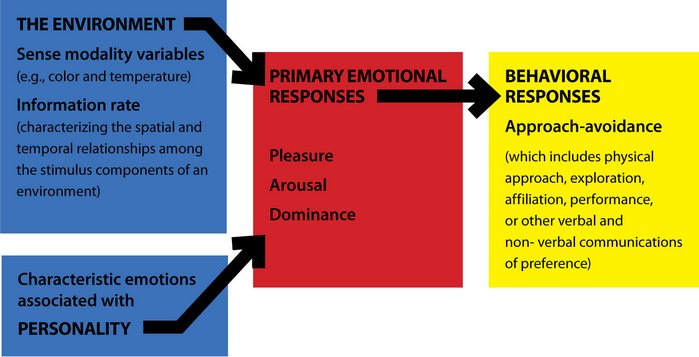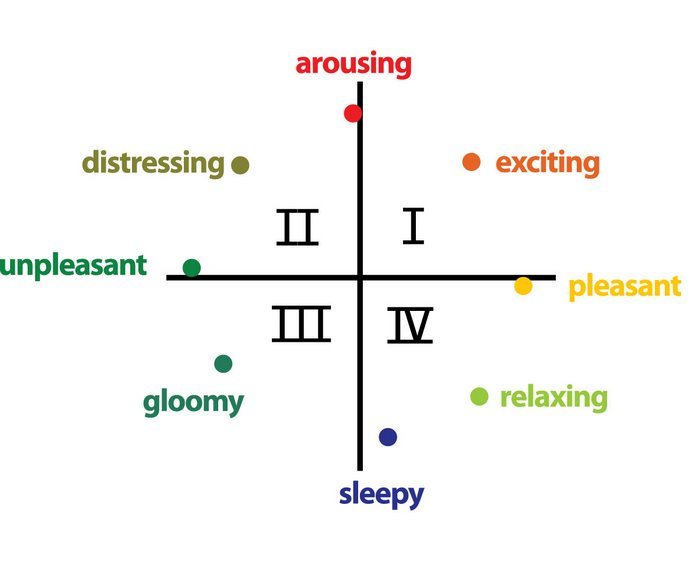In this white paper, Robert Davis, Director, Product Innovation & Marketing at LiteControl provides some insights on how lighting designs are perceived by the brain. Davis, who holds a PhD, is a Fellow of the Illuminating Engineering Society.
 |
|
The human brain. (Photo Courtesy of LiteControl) |
Stimulus – Response. It serves as the foundation of any basic Psychology class. It defines our relationship to the world around us. From Pavlov’s dogs salivating at the sound of a bell to you quickly pulling your finger away from a hot pan, familiar examples of an involuntary response to a stimulus abound. And it all seems pretty simple – present this sort of stimulus, and you can count on a certain response.
Lighting practitioners work hard at getting the stimulus right to attain a desired response. Historically, that has in large part meant a detailed and careful characterization of visual tasks under different lighting conditions - the stimulus – and a variety of important methods for measuring visual performance as those conditions are varied – the response. From Blackwell’s Visibility Level to Rea’s models of Relative Visual Performance, we have learned much about the nature of the stimulus-response relationships relating to human visual performance.
But what about those responses to lighting that go beyond considerations of task performance? Lighting can help create excitement in a themed environment. Lighting can help a person navigate through a new space. Lighting can help to bring about a sense of calm and peacefulness in a sacred setting. Lighting can help to add mystery in a theatrical production. And, lighting can cause us to strongly dislike a room which we would otherwise find appealing. How does our mind process the visual stimulus to produce these sorts of responses? What do we understand today about the way that we light buildings that enables us to link the stimulus of a lighted environment to the full array of cognitive and emotional human responses?
The answer, unfortunately, is – not much. The depth and wealth of our research and knowledge in lighting’s impacts on visual task performance only underscores the dearth of information on these other aspects of human responses to lighting.
But we do know a few things. And, if we look outside of our own industry to the broader fields of environmental cognition and human emotional response, we may be able to make connections that can help us to establish a framework for a more holistic view of lighting’s impacts. In this article, we’ll examine three threads of this framework – one familiar to lighting practitioners and two that are probably less familiar – and explore how weaving these threads together can help to move us along to a deeper understanding of the broad range of human responses to the lighting stimulus.
1st thread: Lighting modes & subjective impressions (Lighting Psychology)
For most lighting practitioners, the phrase “Lighting psychology” immediately brings to mind the work of the late John Flynn. Flynn’s research has been widely documented and discussed within the lighting community and is only briefly summarized here. (If you want a more comprehensive overview, I recommend both Architectural Lighting Design by Gary Steffy and Light: The Shape of Space by Lou Michel. Both books provide excellent details on Flynn’s findings and how they relate to architectural lighting design practice.) Flynn and his colleagues explored what were at the time new research and analytical techniques, in an attempt to document and understand the full range of human impacts of lighting.
Flynn examined the human response to lighting by studying an array of subjective impressions related to architectural settings, in order to determine which of those impressions were affected by changes in the lighting stimulus. For some impressions, changes in the lighting produced significant changes in the response – impressions such as spaciousness, visual clarity, privacy, pleasantness, relaxation, complexity. By linking lighting to these impressions, Flynn demonstrated that architectural lighting plays a much more significant role in the human experience than simply as an enabler of task performance.
In addition to studying human responses to lighting, Flynn also sought to understand the nature of the stimulus that produced those responses. Which attributes of lighting in a space seemed to relate to the various impressions that could result? Flynn identified four of these attributes, which he called the “lighting modes.” The modes each express a continuum of changes in lighting between two extremes. Flynn’s lighting modes express the basic parameters of lighting which designers manipulate in creating the environments they desire – bright / dim, uniform / non-uniform, central / perimeter, and warm / cool. Flynn’s message was that as you change the lighting stimulus along these dimensions, you will produce changes in the human response in terms of the impressions that are reinforced. And – importantly – these responses will occur whether you planned for them or not.
The practicality of Flynn’s work for lighting designers resided in his attempts to link the lighting modes to the human subjective responses. To reinforce a particular impression in a space, a designer could focus on certain aspects of the lighting mode descriptors in designing the lighting system. For example, the designer could reinforce a feeling of relaxation by employing non-uniform lighting on the perimeter room surfaces from warm-tone light sources. Uniform lighting on the perimeter room surfaces reinforces an impression of spaciousness. Although the design guidance that resulted from the Flynn work is qualitative in nature, many practitioners have found the linkages between the lighting modes and the subjective impressions to be a useful characterization of the stimulus and responses to lighting that move beyond task performance.
2nd thread: Making sense and being involved (Environmental Cognition)
Whereas Flynn’s research focused specifically on lighting, other researchers with no particular interest in lighting examined the broad range of human responses to environmental stimuli. From the field of environmental cognition, the work of Kaplan and Kaplan provides important insights of relevance for lighting practice. These researchers sought to understand the factors that drive human preference for environments. One factor that emerged from their research is the desire to make sense of our surroundings. According to the Kaplans, when we are exposed to a new environment, finding a cognitive match for the environment in our memory is a primary goal, as a way of helping us to interpret and understand the new environment.
Often times we enter a new environment that has many similarities to other spaces we have experienced. The high degree of familiarity elicits a pleasant, comfortable reaction as we immediately are able to make sense of the setting. Other times we enter an unusual space that poses an entirely new experience, and we find it disconcerting as we struggle to make sense of the environment. The fundamental human need to make sense of our environment explains both of these disparate experiences, according to the Kaplans’ research.
But what about the WOW factor in a new environment? We have all experienced a time when we encountered something completely new, but somehow the uniqueness and unfamiliarity were stimulating and exciting. And no doubt we share the common experience of entering a highly familiar space and finding that its very familiarity produces a low preference – “Oh please, not another drab hotel seminar room with boring uniform lighting!” In this case, highly familiar leads to low preference. Clearly, a second factor must interact with our desire to make sense of the environment in determining our preference.
The factor that supplements our drive to make sense of our environment, according to the Kaplans, is a desire for involvement with the environment. We want the environment to be interesting, we want it to invite us to explore and engage, we want a sense of complexity and mystery. This underlying purpose of involvement makes some novel environments seem exciting rather than just plain weird or overwhelming, and it also makes some very familiar environments seem just too uninteresting to us.
 |
|
A summary of Kaplans preference chart. (Photo Courtesy of LiteControl) |
Kaplan and Kaplan use two key words to capture the essence of these environmental aspects that drive our preference: coherence and complexity. Coherence relates to our ability to make sense of the environment – does the environment provide us with cues that enable proper interpretation? Are there enough familiar elements in the environment that allow us to make mental matches to our prior experiences? If we are able to quickly make sense of an environment that is coherent, then the likelihood that we will develop a positive preference for the environment increases.
Although Kaplan and Kaplan were environmental psychologists who primarily focused on outdoor environments in their research, they recognized the connections between coherence and lighting effects. Consider this quote:
“It is also important that a change in texture or brightness in the visual array is associated with something important going on in the scene. In other words, something that draws one’s attention within the scene should turn out to be an important object or boundary. . . If what draws one’s attention and what is worth looking at turn out to be different properties, then the scene lacks coherence.” (Kaplan 1988, p. 49)
So a brightness emphasis that helps to make sense of an environment increases its coherence, making it a more pleasant space. Conversely, a change in brightness that is unrelated to anything important in the visual scene creates a lack of coherence, makes it more difficult to properly make sense of the space, and thereby reduces a person’s preference for the space.
Coherence is critical, but a space that is completely coherent but overly simplistic fails to provide the stimulation and involvement that we desire. Complexity in the environment relates to our innate desire to engage, to be active participants with our environment. This cognitive link between complexity and preference also occurs in the realm of music appreciation. In his excellent book, This is Your Brain on Music, Levitin writes:
“When a musical piece is too simple we tend not to like it, finding it trivial. When it is too complex, we tend not to like it, finding it unpredictable – we don’t perceive it to be grounded in anything familiar. Music, or any art form for that matter, has to strike the right balance between simplicity and complexity for us to like it.”
Apparently, our desire for a certain level of complexity holds true for a wide range of stimuli, whether a musical piece or an architectural environment. We desire coherent environments that we can easily interpret, while at the same time we desire an appropriate level of complexity to keep us interested.
The third thread: Pleasantness, arousal and control (Emotional Response)
From Flynn, we see a thread of thought that describes the lighting stimulus in terms of some basic modes of variations and links those variations to the human response of subjective impressions of environments. From Kaplan and Kaplan, we weave in a thread that characterizes the stimulus along the parameters of coherence and complexity and relates those parameters to the response of human preference. And for our third thread, we look to the work of James Russell, whose career has been devoted to understanding human emotional development and response.
 |
|
Kaplan and Kaplan stimulus along the parameters of coherence and complexity. (Photo Courtesy of LiteControl) |
In Russell’s model the primary emotional responses to the environment determine the behavioral responses. According to this model, human sensory systems process the environment and characterize the relationships between various aspects of the stimulus. This sensory input combines with personality characteristics to produce primary emotional responses in three areas – the pleasure that a person finds in the environment, the amount of arousal or stimulation that the environment provides, and the extent of dominance or control that people feel they have while in the environment.
The dominance response has some fascinating implications for lighting, as it depends on how much control we feel we have over the environment compared to how much we feel the environment controls us. The connections to automatic vs. manual lighting controls are intriguing. We’ve seen studies that document greater energy savings when people have manual control, and we all know stories of negative reactions to fully automatic controls. We may be able to weave this thread together with the Kaplan’s “desire for involvement” thread to derive a general principle about human reactions to environments. But, that exploration is beyond our scope for now.
 |
|
Classification of Russell's theory on human reaction to environment.(Photo Courtesy of LiteControl) |
Ultimately, Russell settled on the pleasure and arousal emotions as the two primary ways that we respond to environments. In Russell’s view, whenever we enter a new environment, we quickly place it into one of four quadrants that are defined by the two axes of pleasure and arousal. This structure is shown in the figure below.
While Russell’s initial work related directly to architectural environments, he later explored human emotional response to all types of stimuli. His model has been used in a variety of industries and applications, from advertising studies to experiments in childhood development. (In fact, his seminal paper in the Journal of Research in Personality titled, “Evidence for a three-factor theory of emotions,” was recognized by the journal as one of the ten most frequently cited papers in its 43-year history.) So it seems that these emotional responses are fundamental to the human condition.
Russell argues that our emotional response to a stimulus along the two dimensions of pleasure and arousal is a single, integrated response rather than two distinct responses. The words we use to describe spaces reflect this sort of integrated response. An environment that we call, “stimulating,” is one that is both arousing and pleasant, while one that we call, “tense,” is also arousing but a bit unpleasant. A “relaxing” space rates low on arousal but relatively high on pleasure, while a “dreary” space is also low on arousal but elicits a response that is low on pleasure as well.
Weaving the threads together for a unified design approach
So Flynn gives us a thread of a stimulus described by lighting modes, linked to the human response of subjective impressions of environments. Kaplan and Kaplan give us a thread of a preference response that appears to be linked to environmental stimuli that are both coherent and complex – we can make sense of them and they are interesting enough to elicit our involvement. And Russell gives us a thread of primary emotional responses to stimuli that apparently drive our assessments of any environment, as we integrate a response along the dimensions of pleasantness and arousal. How can we weave these disparate threads together?
We can explore this more fully in future articles. For now, consider a conference room application. The designer wants to provide uniform illuminance across the tabletop as the first layer of the lighting. Experimental evidence indicates that this central, uniform lighting increases the arousal level of the space, which seems to be preferred for a working environment. Next the designer adds some uniform perimeter lighting along two walls, to reinforce an impression of spaciousness. This layer articulates the architectural boundaries of the space, adding to its coherence. Accent lighting on some artwork on an end wall provides an additional layer of light. The non-uniformity of this layer increases the complexity of the visual scene, making it more interesting, inviting the occupant to engage with the environment. The space succeeds because the designer has structured the lighting solution so that it reinforces the desired architectural impressions (according to Flynn), it balances the human needs for coherence and complexity (according to Kaplan), and it provides levels of arousal and pleasantness (according to Russell) that are appropriate for the architectural context of the space.
We can think of many open questions that remain. Can we map the Flynn modes onto the Russell emotional responses? That is, what attributes of the lighting cause a space to seem more stimulating? Or less pleasant? Does increasing complexity as defined by Kaplan lead to higher levels of arousal? At what point does this increased complexity begin to compromise coherence, producing a less desirable emotional response? How do we match the cognitive and emotional needs to the context, so that we have differing guidelines depending on the desired human response to a work setting, a social setting, or a retail setting? These are all important and intriguing questions to explore as we seek to better understand the human brain on lighting.















